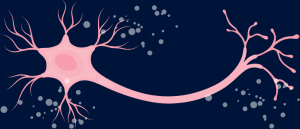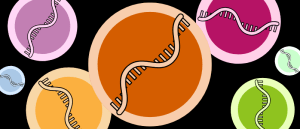A super-resolution view of lipid nanoparticles

Original story from Lund University (Sweden).
Could lipid nanoparticles hold the key to delivering gene therapies for currently untreatable cancers and genetic disorders?
When the world closed down during the pandemic, lipid nanoparticles opened the door for a new sort of vaccine. Researchers are now aiming to use the technique to treat cancer, genetic disorders and even tailor medicine to a person’s DNA.
However, even if the CRISPR/Cas9 gene scissors can open the way for correcting genetic mutations, the tool must be able to get into the cells and reach the gene that is to be corrected. For this reason, intensive research is being carried out on lipid nanoparticles in order to understand how they could be used to deliver new curative treatments for diseases such as cancer, genetic disorders and even some neurological conditions.
“We will have the capacity to rewrite the genetic code when it is misspelled. The technique is already available. But the delivery method must be optimized, and here lipid nanoparticles offer a possible solution,” commented Anders Wittrup, a researcher at the Department of Clinical Sciences and Wallenberg Center for Molecular Medicine at Lund University (Sweden). Wittrup is also a medical oncologist at Skåne University Hospital (Malmö, Sweden) and his research team focuses on RNA therapies and lipid nanoparticles. Their aim is to better understand how to use these particles to deliver new treatments.
 Lipid nanoparticles can now target neurons
Lipid nanoparticles can now target neurons
Novel peptide-modified lipid nanoparticles can cross the blood–brain barrier and target neurons, taking one step closer to next-generation treatments for neurological diseases.
How lipid nanoparticles deliver
Lipid nanoparticles sound high-tech, but, in essence, they are made of fat. Just like the body’s cell membranes they consist of lipids, which makes them both biocompatible and good at blending into the body with limited activation of the immune system. The particles act as protective bubbles that encapsulate sensitive content, such as mRNA or other active substances, and help them enter the cells.
They could be described as small spheres – think soap bubbles – that carry their content into cell interiors. However, two major challenges must be overcome before the dream of effective mRNA delivery to different parts of the body can become a reality.
Guiding the particles to specific parts of the body
The first challenge is to guide the lipid nanoparticles to the right destination. Most lipid nanoparticles injected intravenously end up in the liver – regardless of where they are intended to go. The liver is the body’s major filtration center and effectively picks up foreign particles. However, far more precision is required to treat a tumor or a genetic disorder.
“A drug delivery vehicle must reach the tissue that you want to treat, introduce enough RNA material and reach a sufficient number of cells. It must be effective,” commented Wittrup.
 Developing and delivering mRNA lipid nanoparticle therapeutics
Developing and delivering mRNA lipid nanoparticle therapeutics
Learn more about mRNA therapeutics and lipid delivery systems, as well as what we can expect from these therapeutics in the future.
Super-resolution provides up-close look at particles
Wittrup’s team, in collaboration with AstraZeneca (Cambridge, UK), has used a method called super-resolution microscopy to study what happens when RNA is delivered into cells using lipid nanoparticles. Super-resolution makes it possible to investigate how the nanoparticles behave once they have entered the cell.
The second major challenge for lipid nanoparticles, revealed in this study, is that they get stuck in endosomes – tiny storage bubbles within the cell – where foreign substances are often confined.
“In the study we saw that the lipid nanoparticles must disrupt the endosome in order to deliver their RNA load to the interior of the cell known as the cytosol. But even if a hole is made, we also saw that only a small amount of RNA is actually delivered into the cytosol from the endosome. In addition, the lipid nanoparticles sometimes make holes in structures in which there is no RNA available to deliver. This means unnecessary damage without any therapeutic benefit,” explained Johanna Johansson, first author of the study.
Looking ahead
For vaccines, it is sufficient for a small amount of mRNA to reach the cells of the immune system. The immune system can build up protection even from small signals. However, treating cancer or genetic disorders in a specific organ requires larger doses for the treatment to be effective.
“What we have seen from the study can help to advance the technique. We have identified those steps that must be improved and be more effective so that we can use lipid nanoparticles to reach more tissues in the body and thereby treat more diseases. The aim is for a sufficiently effective RNA delivery in the future to be able to turn off the driving cancer genes that are overactive in a specific patient’s tumor,” concluded Wittrup.
This article has been republished from the following materials. Material may have been edited for length and house style. For further information, please contact the cited source. Our press release publishing policy can be accessed here.



